
Rights Reserved - Free Access.
This digital object is protected by copyright and/or related rights. This digital object is accessible without charge, but its use is subject to written permission.
Unless expressly stated otherwise in the licensing conditions, you are free to make any of the acts permitted by your national copyright and related rights act, including browsing, printing and making a copy for your own personal purposes.
All other acts of reproduction and communication to the public are subject to the licensing conditions attached to the digital object.
ARMY BOOTS OF THE WORLD. REVIEWS
Important notice: we do not sell any boots! The prices are given for information purposes only!
USA ![]()
U.S. Army combat boots, from the year 1948 to 2004 (M-1948 ... M-1974)
Notional model names and the main characteristics by which each of these types of boots can be identified:
★ M-1948 (produced until 1956): the sole of the boot is made of thick cowhide with sewn and glued rubber tread, capped toe, 11 eyelets, convex heel cup, russet color of the leather;
★ M-1956 (1956 - 1963): the sole of the boot is made of thick cowhide with sewn and glued rubber tread, capped toe, 10 eyelets, convex heel cup;
★ M-1963 (1963 - 1967): the sole of the boot is made of thick cowhide with sewn and glued rubber tread, 8 eyelets, reduced shank height, convex heel cup;
★ M-1967 (1967 - 1971): the sole of the boot is made of thick cowhide with sewn and glued rubber tread, 9 eyelets, flatter heel cup;
★ М-1968 (1967, 1968 - 1974): direct molded sole (DMS), wavy chevron tread pattern, flatter heel cup;
★ M-1974 (1974 - 1984): direct molded sole (DMS), wavy chevron tread pattern, 5+4 eyelets, convex heel cup;
★ M-1984 (1984 - 2004): military boots with water-resistant and anti-fungal impregnation, direct molded sole (DMS) and speed-lacing system (Mildew & Water Resistant, DMS, Speed-Lacing, Black Combat Boots):
- Early type (1984 - 1992): full-length speed-lacing system, DMS with notches, convex heel cup (examples of markings 8-87, 9-89, 4-90...).
- Late type (1992 - 2004): speed-lacing system + 2 simple round eyelets at the bottom of the lacing, DMS sole with notches, convex heel cup (examples of markings 9-92, 8-93, 4-97...).
US army combat boots M-1948 (produced until 1956)
Boots, Service, Combat, Russet
Boots, Service, Combat, Russet BOOTS, COMBAT, MAN'S, LEATHER, RUSSET, CAPPED TOE, RUBBER SOLE AND HEEL

Examples of markings: MAR.4.1949, 21.JUNE.1950, NOV.8.1950, MARCH 26.1951, JULY 17.1951, NOV.27.1951, FEB.28.1952, 2 OCT.1952, 13 FEB.53, JUNE 25.1953, 10 NOV.1954, JULY 20.1955, AUG.2.1956 etc.
For some period of time, during the transition to a new boot type in 1956, this boot model has both black and russet leather uppers. The M-1948 was replaced by black leather boots (M-1956, years of use: 1956 - 1963).
With the exception of some applications and some units (where low boots are simply more comfortable), it was these boots that changed the previously accepted view that military boots should be low, and became the prototype for all current standard military boots. which have become commonplace.
Although the boots of the previous model, the M-1943, already looked like high boots, they were in fact just a combination of the usual low boots and leather cuffs sewn on top of them. It can be said that the standardization of high military boots with lacing, already on a general army scale, and not limited to elite paratroopers, began with the American boots model M-1948.

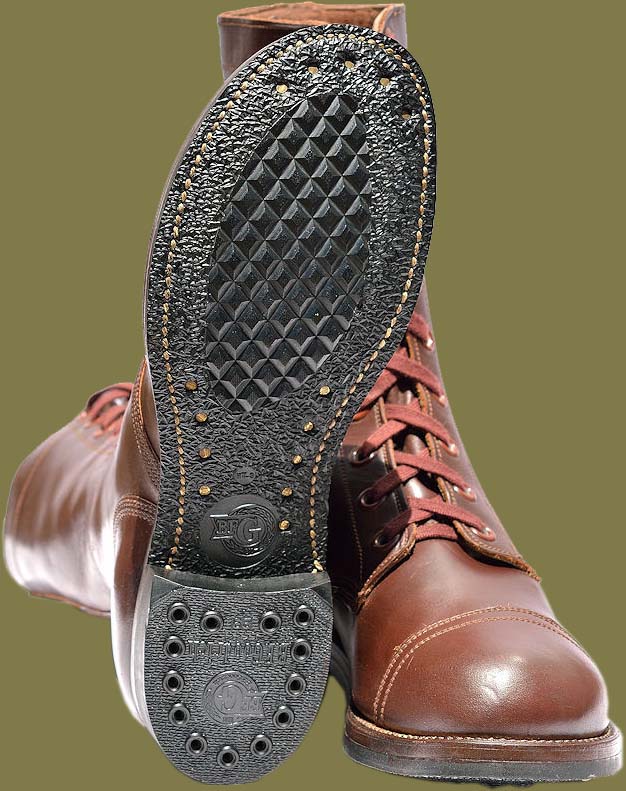

The corners of the heel are smoothed.
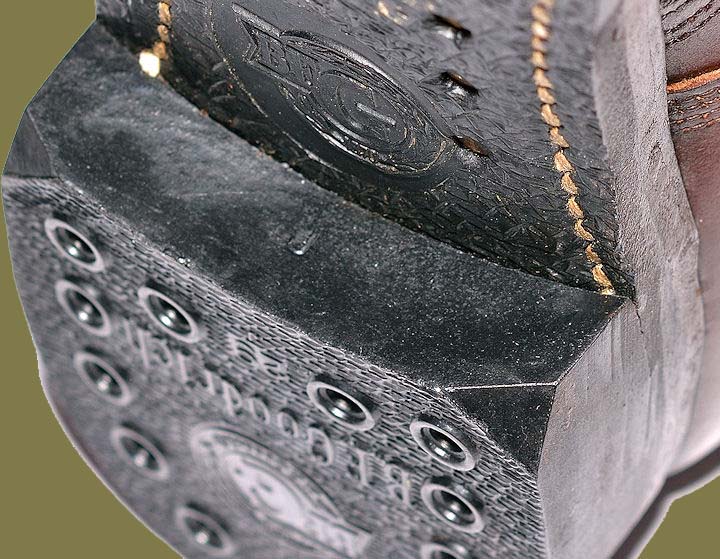
KIRKENDALL BOOT CO.
DA-30-352-TAP-2386 25 JUNE 53
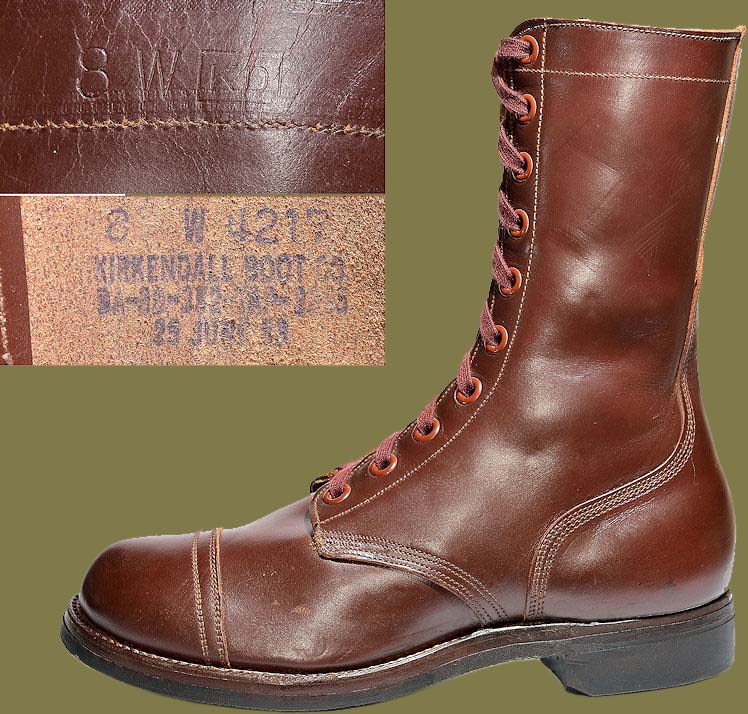
Gradual transition to black leather combat boots.
AUG. 2, 1956
INTERNATIONAL SHOE CO.
DA-36-030-QM-8314 PHILA. Q.M. DEPOT

The transition to black leather boots took place from 1955 to 1956.
JOHN ADDISON FOOTWEAR INC.
DA-36-030-QM-6661 30 DEC. 1955 PHIL. QMD
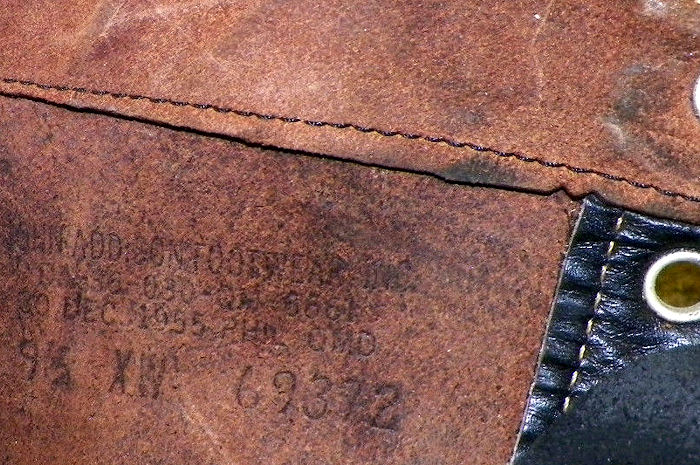
An example of boots with no markings, the lacing system consists of 11 pairs of eyelets. Since they are labeled EE rather than W, and have no heel notch, we can assume they are relatively early, or perhaps they are not contract army boots.

Unfortunately, it is impossible to decipher the year or any other information about these boots.
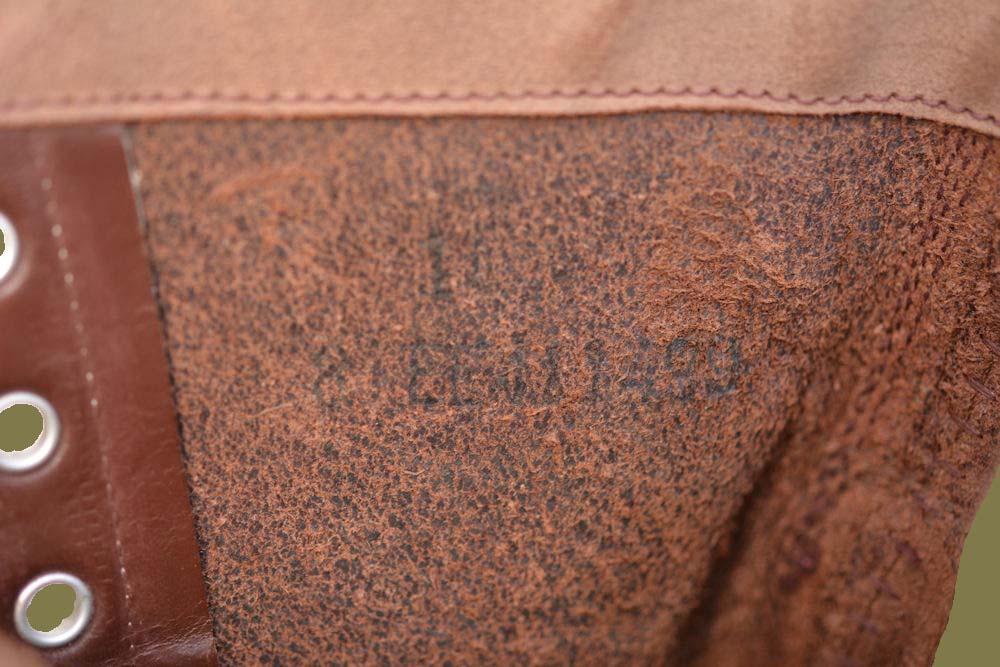
The corners of the heel are not smoothed.
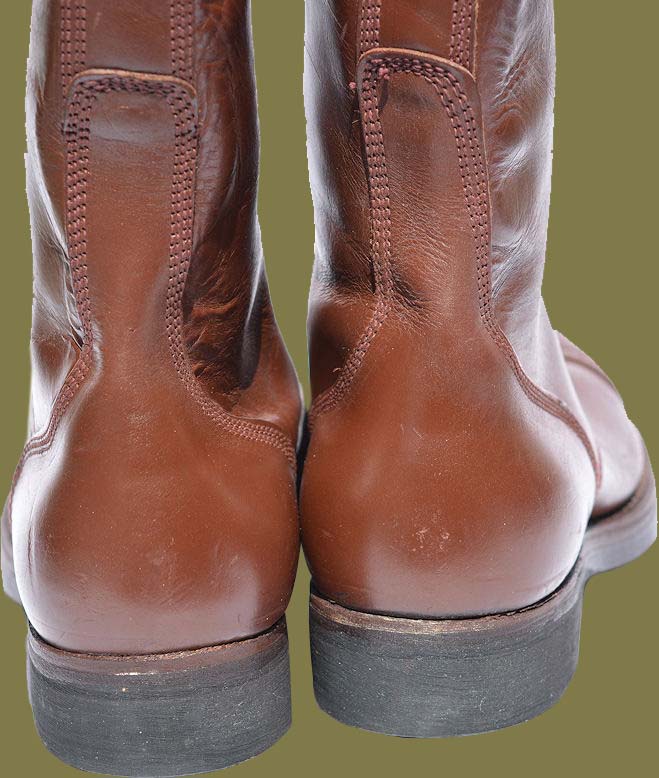
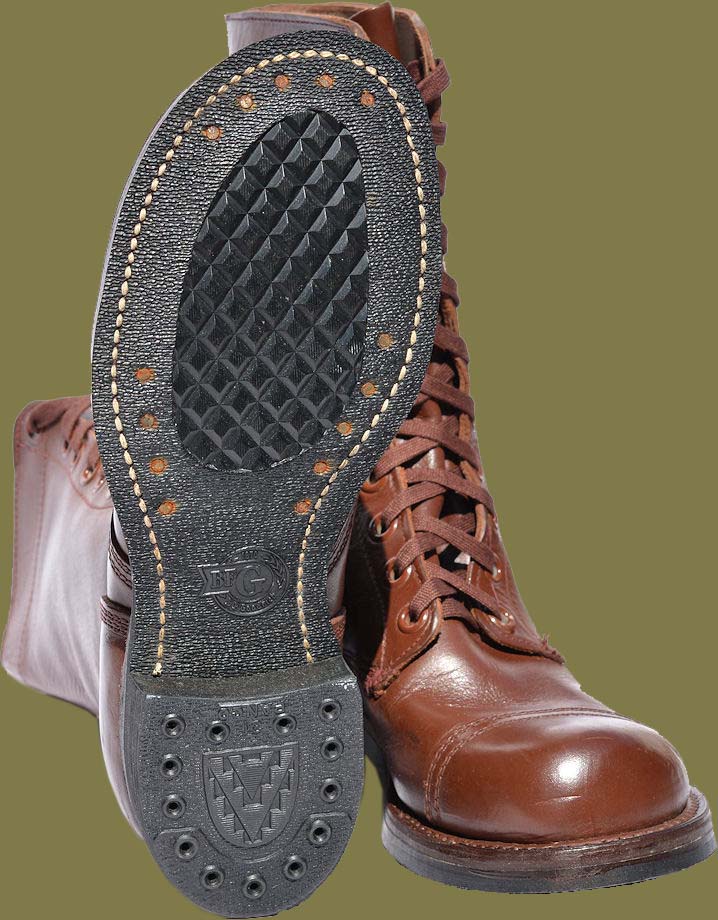
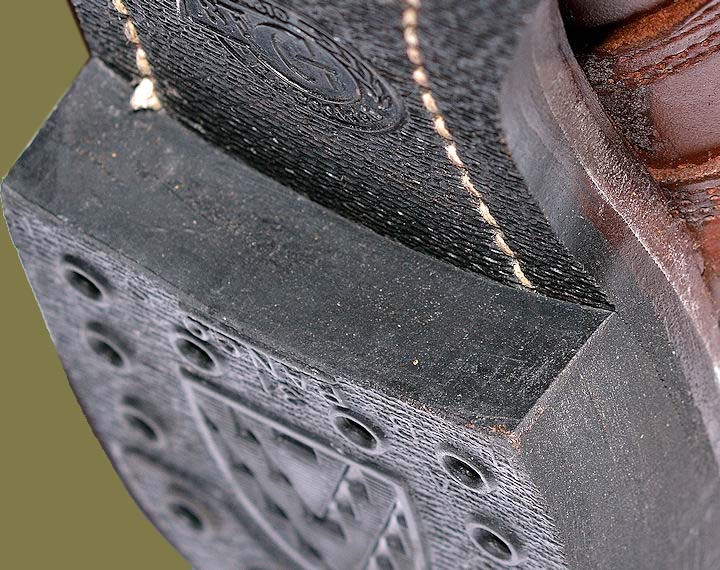
A very stylish boot toe shape.

The silhouette is more refined than the shoes dated 25 JUNE 53 (right), although this difference is barely noticeable in the photo.
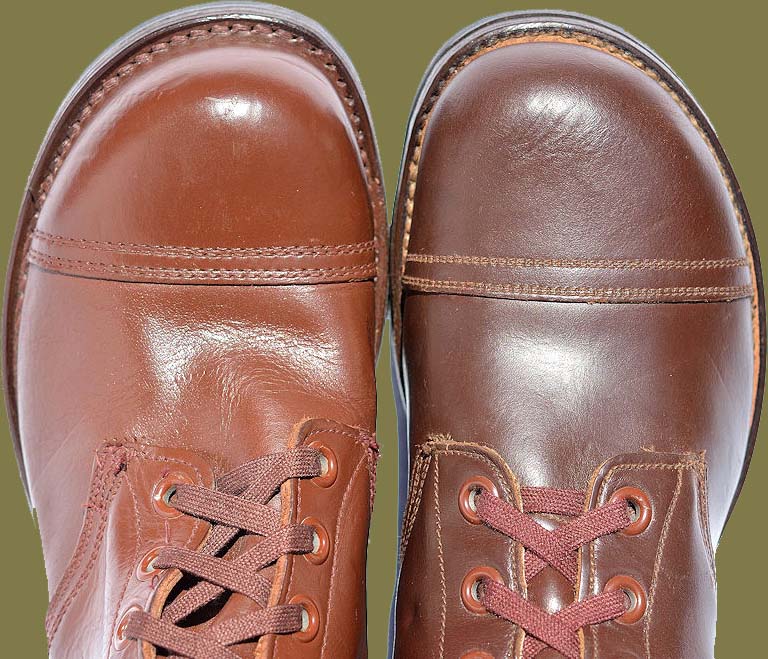
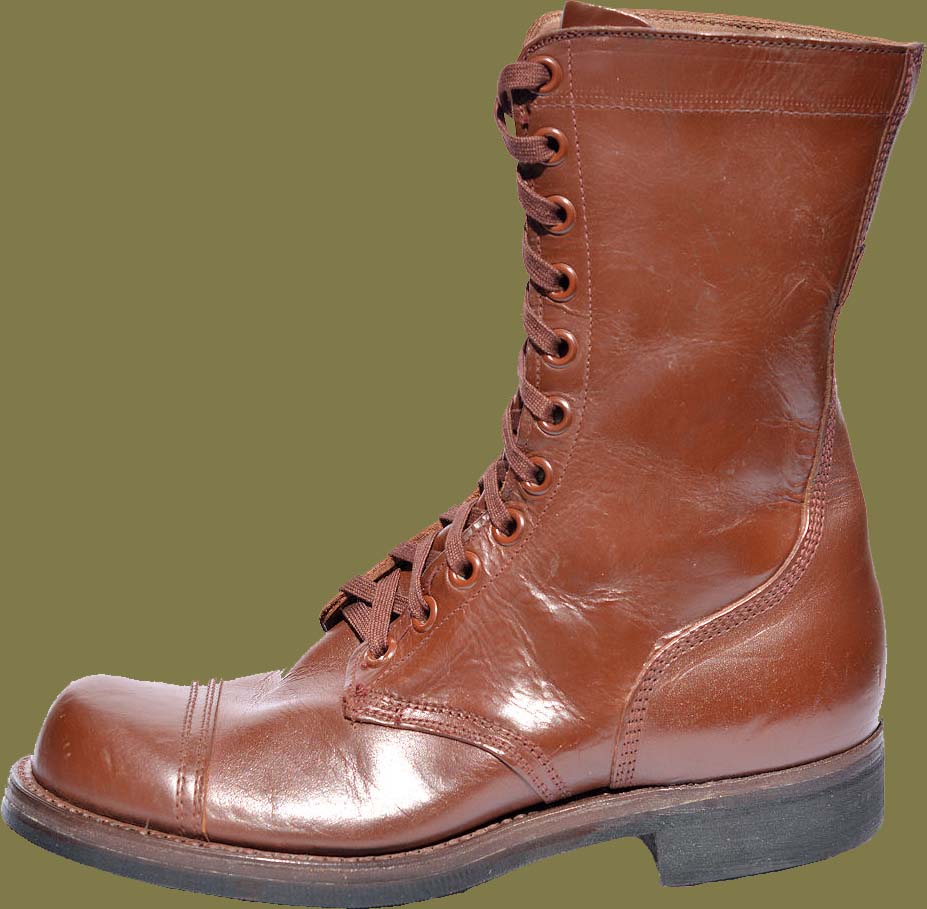
US army combat boots , М-1956 (1956 – 1963)
The red-brown military boots Boots, Service, Combat, Russet (commonly known as the M-1948), adopted to equip the U.S. Army in the late '40s, were changed to black in 1956, and have been available in black ever since. In terms of shape, it is virtually unchanged from the previous model.
The M-1956 is the first model of black leather combat boots that were used in the US Army for over half a century, until around 2004.
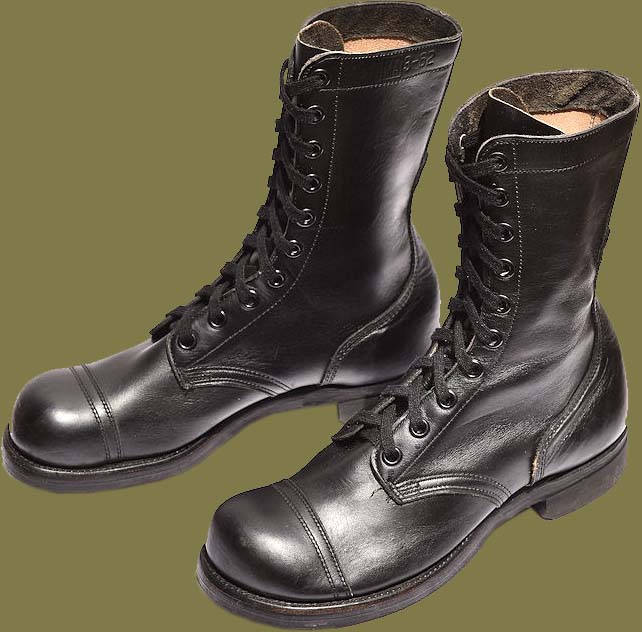
(Stamp inside the boot, at the top of the boot: 30 DEC.1955, JAN.27.1956, MARCH 16.1956, AUG.2.1956, AUG.27.1956, 4 OCT.56, 10 JAN.57, JAN.10,1957, APRIL.11,1958, etc.)
(Embossed markings on the outer surface of the boot tops: 4-59 959 1059 3 60 10-60 12-60 1-61 5-61 9-61 10-61 1-62 3-62 7-62 8-62 2-63, etc.)
(Russet Brown: NOV.8,1950, MARCH 26,1951, JULY 17,1951, 2 OCT. 1952, 13 FEB.53, JUNE 25,1953, 10 NOV.1954, JULY 20.1955, AUG.2.1956, etc.)
Black and red-brown (Russet) leather were duplicated in production for a period during the transition to the changes of the year 1956.
The heel cup is characterized by a convex shape.

There are no notable modifications to the shape or construction, other than the color change from russet to black color.
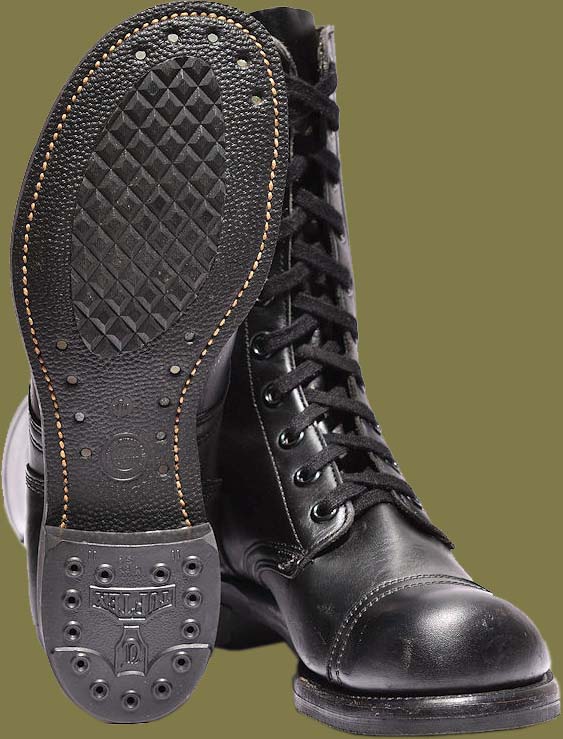
Heels with a cut edge.

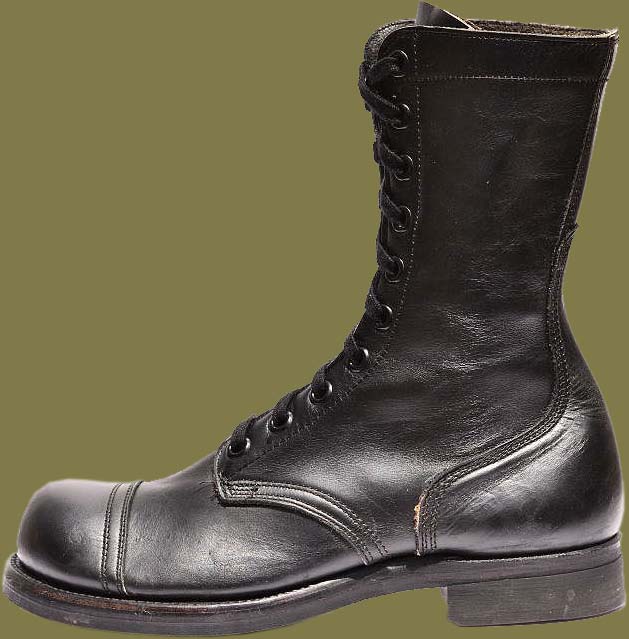
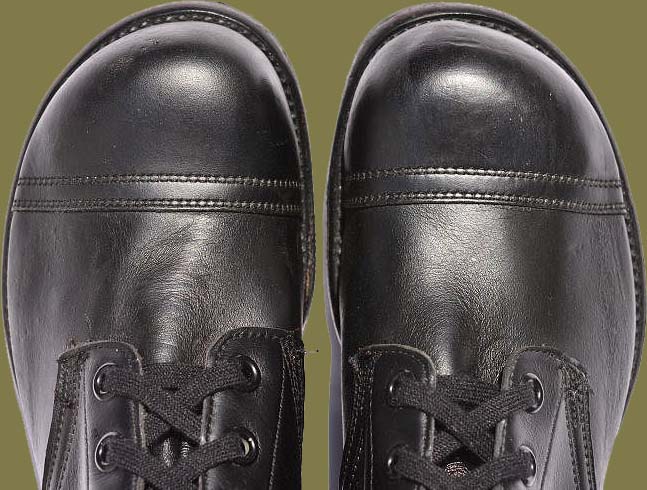
Embossed leather markings (with size-full, manufacturer's code, month and year of production), on the upper outer part of the boots, in addition to an inner stamp with markings, begin to appear around 1959.
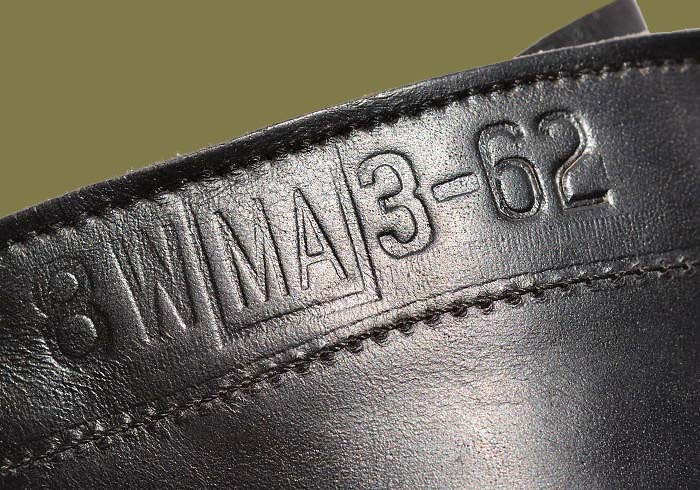
A gradual transition from red-brown (Russet) to black leather boots took place from 1955 to 1956.
AUG. 2, 1956
INTERNATIONAL SHOE CO.
DA-36-030-QM-8314 PHILA. Q.M. DEPOT
JOHN ADDISON FOOTWEAR INC.
DA-36-030-QM-6661 30 DEC. 1955 PHIL. QMD
Example of boots model M-1956
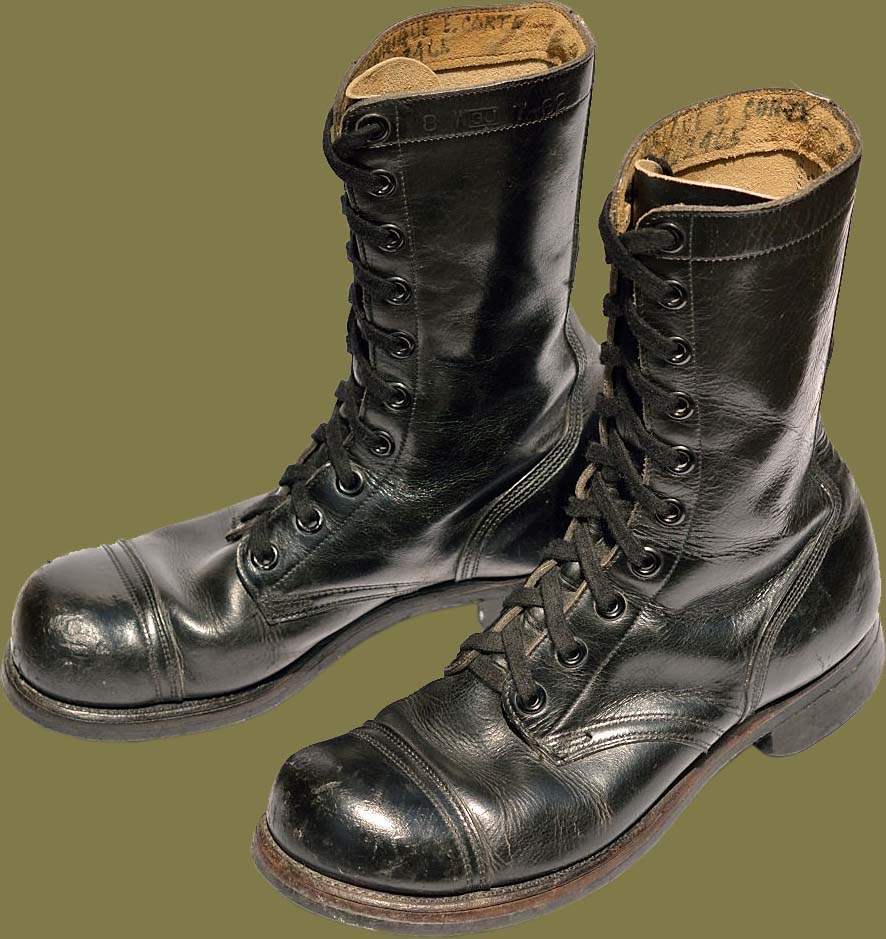
Visual comparison of M-1956 boots and Corcoran parachute boots, side view, toe and sole:
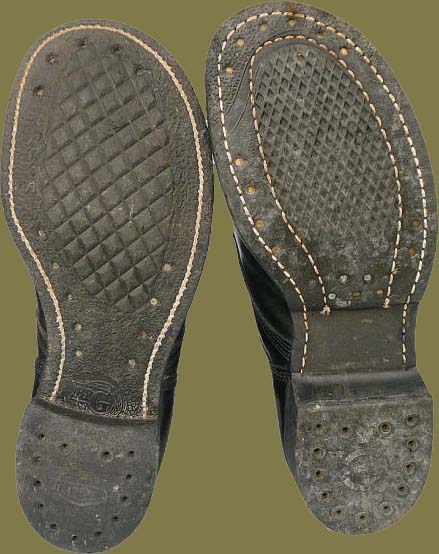
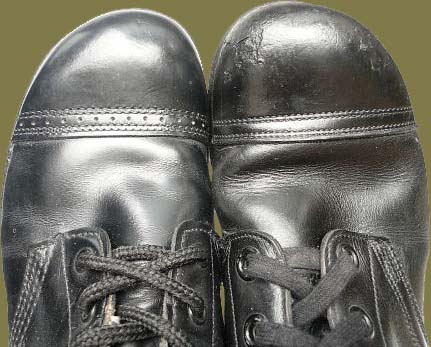
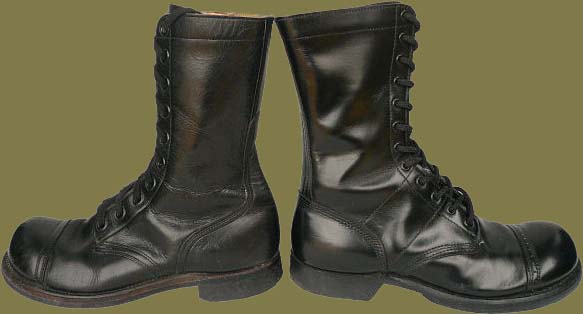
US army combat boots (McNamara Boots), М-1963 (1963 - 1967)
Black leather combat boots of this type had been used, judging by the markings, from 1963 for about 5 years. Also known as McNamara Boots.
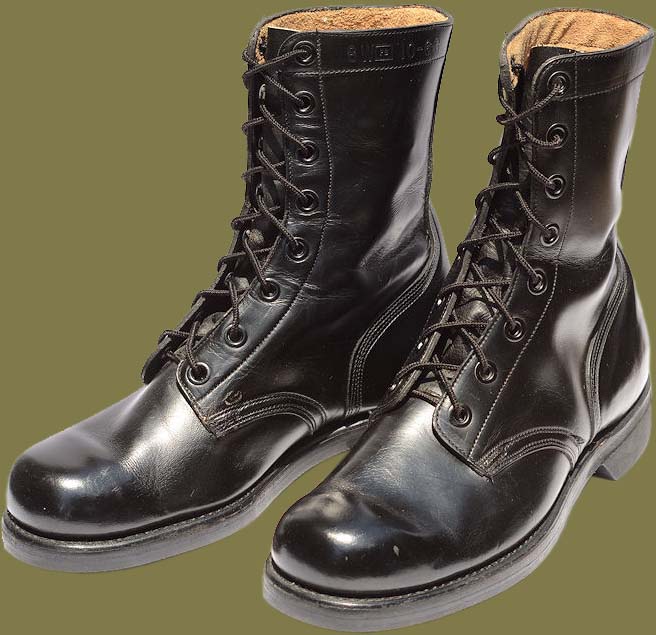
The heel cup is convex in shape.
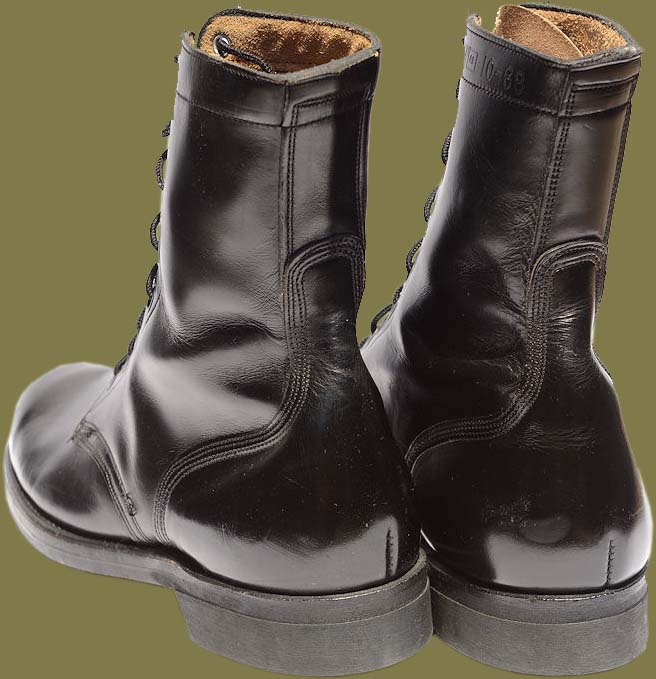
The height of this model of boot is 8 inches. Although the next model, the M-1967, was a half inch taller (i.e. 8 ½ inches), the standard height of most military boots today is again 8 inches, so the M-1963 can rightfully be considered the progenitor of this standard.
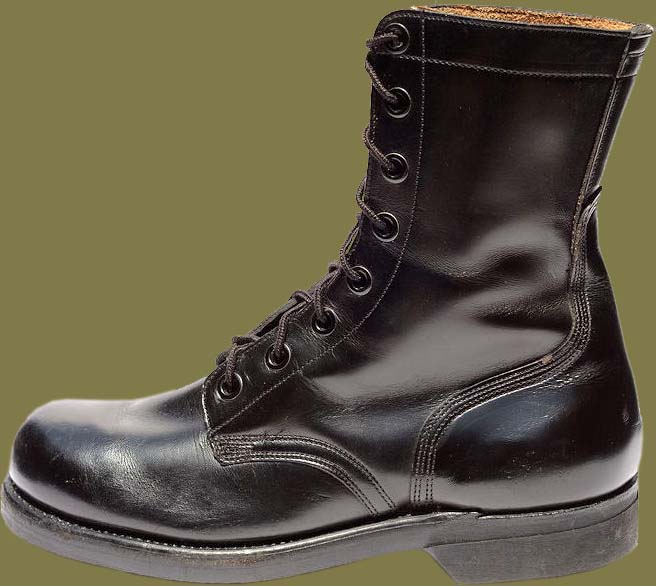

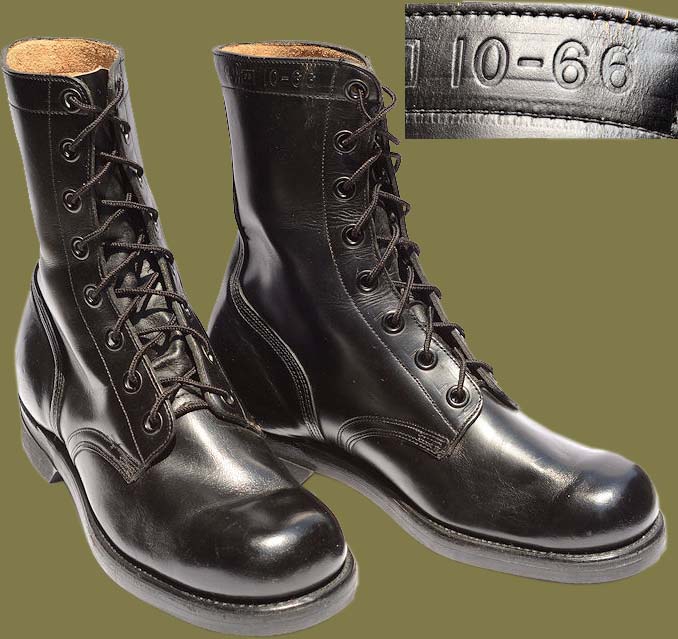
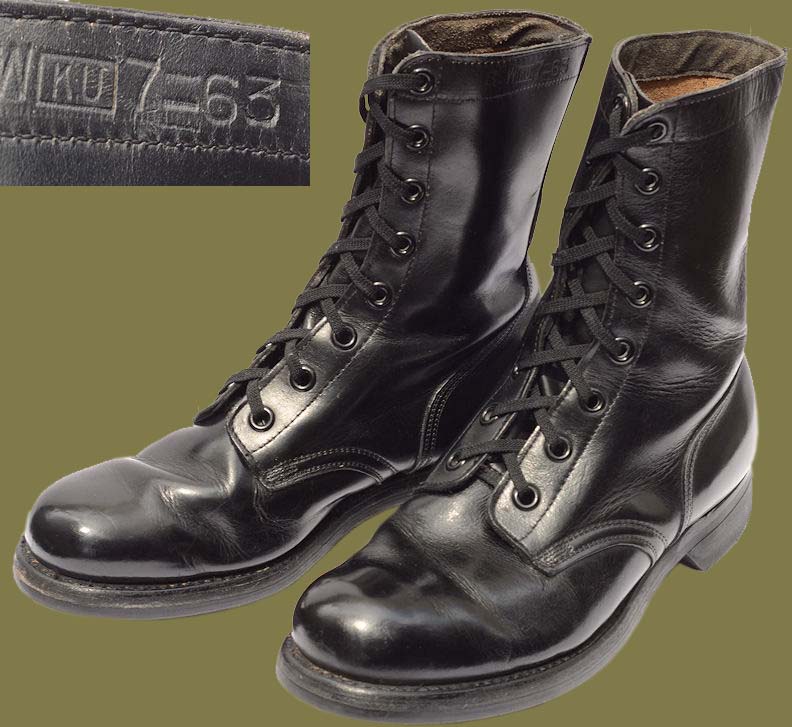

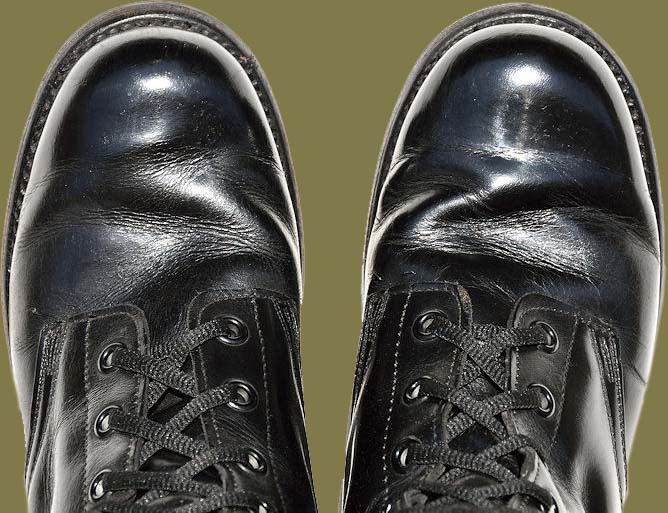
US army combat boots М-1967 (1967 - 1971)
Black leather combat boots of this type had been used, judging from the markings, from 1967 for about 5 years. (Markings 7-67 8-68 9-68 12-71, etc.)

Sometimes these boots are mistaken for commercial boots made for the civilian market.

This model was originally characterized by the traditional glue-and-stitch, nail-on, Goodyear welt construction (conventionally known as M-1968); a later version, with a direct molded sole (DMS), was produced from about September 1967, but this M-1967 model was not permanently discontinued, and its production can be confirmed until about 1971. However, production and distribution of boots of this type seems to have waned rapidly, and it goes without saying that this model was a relative minority among the boots. produced during this time period.
Nevertheless, the fact that this model was produced exclusively between September 1968 and December 1971 has not yet been definitively confirmed. It is possible that they were not produced continuously, and that eventually batches of these boots were produced irregularly, according to incoming orders.
At the same time, they are known to still be in service in 1971, so for convenience we will identify the period of use as 1967 - 1971. From the introduction of this model with a glued-stitched, nailed-in sole until the advent (popularization) of the direct molded sole version (M-1968-DMS), it was a staple for only a short period of time.
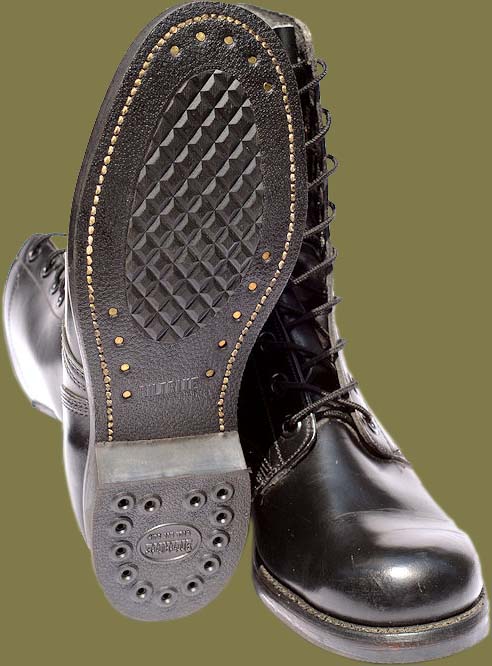
M-1967, the last of the 3rd, 12-71, the last production M-1967 to enter 1972 according to DSA terminology.

ADISON SHOE CORPORATION
DSA 100-72-C-07XX
1X DECEMBER 1971 DPSC
X = indecipherable

These boots are beautiful, look great, feature a great ergonomic design that approximates the natural shape of the foot, 8 ½ inches high.
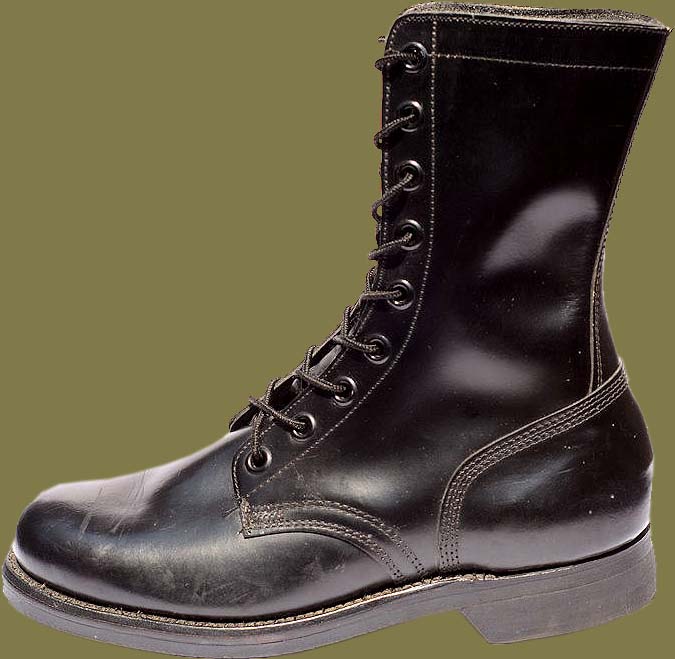
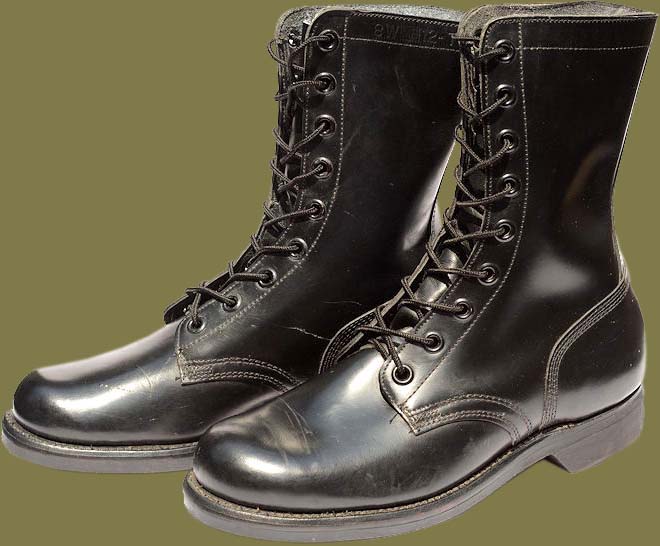
Those models with the leather upper remaining the same and the glue-stitched sole changed to DMS, as it is now, may be classified as M-1968, the markings of these boots being identified 1967 and 1968 through 1974. (Markings 9-67, 9-68, 2-69, 4-69, 8-69, 12-69, 1-70, 11-70, 11-71, 2-72, 7-72, 7-72, 8-72, 12-72, 4-73, 7-73, 10-73, 6-74, etc.)
The reason for labeling these molded sole boots (DMS) as M-1968 confirms the "9-67" markings is to clarify the process and sequence of change from the previous model, the M-1967, and also because in 1967 the use of the molded sole process for direct attachment to the leather upper (DMS) was still very rare, and the generally accepted view is that this technology did not become widespread until 1968, or even 1969. A classification of "M-1967", early and late" could also be considered, but would be slightly different due to the time of appearance and the period of parallel use of different versions of the boots (this classification may be reviewed or changed in the future).
1st, 2nd and 3rd from left to right.
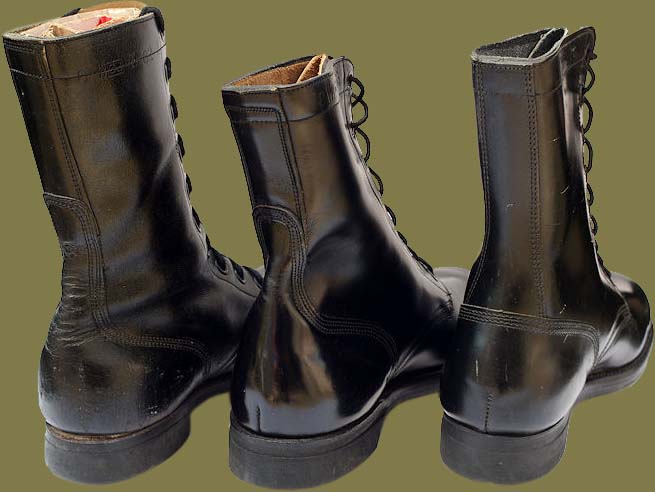
Marking 56-63, 63-67, 67-71
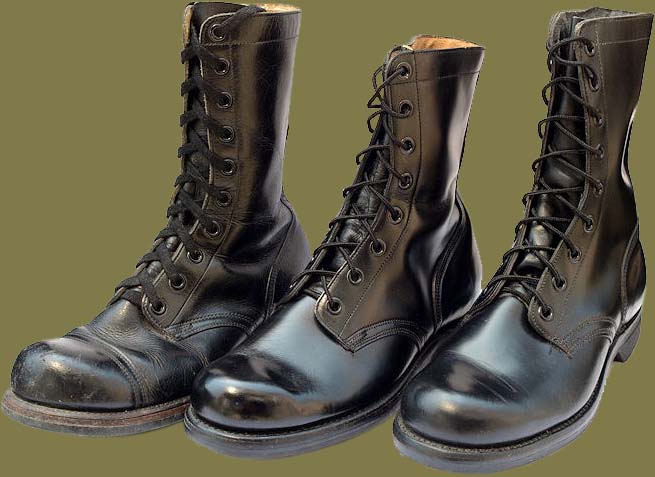
US army combat boots М-1967 (1967 - 1974)
Black leather military boots used, judging by the markings, from 1967 to 1974.
(Marking 9-67, 9-68, 2-69, 4-69, 8-69, 12-69, 1-70, 11-70, 11-71, 2-72, 7-72, 8-72, 12-72, 4-73, 7-73, 10-73, 3-74, 6-74, etc.)

Mass production of M-1967 boots, with glue-stitched soles, did not begin until some time after the appearance of this model (examples of markings 7-67, 9-67, printing DSA-100-68), so it appears that the production system was established in anticipation of DMS from the time of the appearance of M-1967. It is noteworthy that production was not reoriented to the new type of sole, the DMS, but ran in parallel between 1967 and 1971. However, production and distribution of boots with the old type sole was quickly and rapidly phased out, and the old model existed in an extremely limited fashion.
This may have been a special measure by the Pentagon to allow factories and manufacturers without DMS molding capacity (machines) to also participate in production.
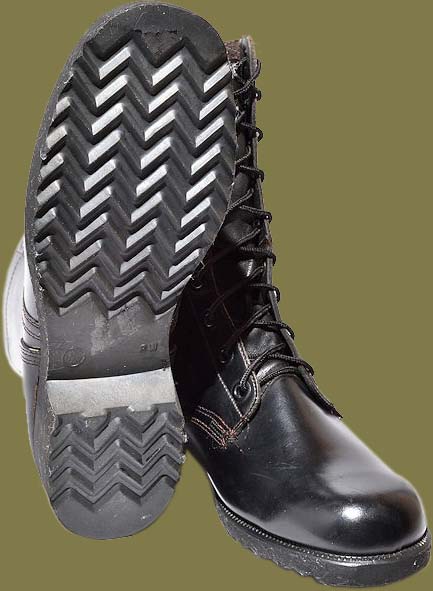
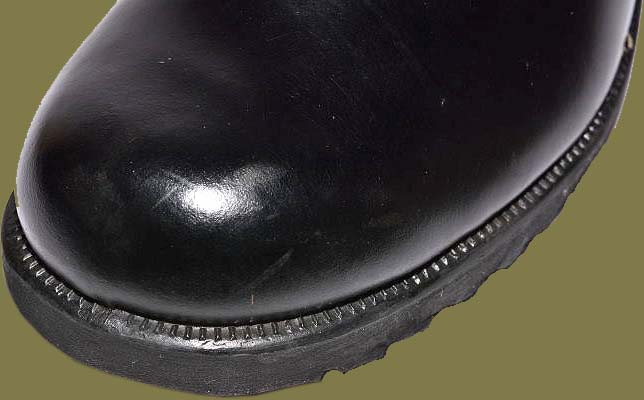
The 1967 design was carried over to the 1974 model boots as well. Model M-1974 was produced in the time period 1974 - 1984, with the "chevron" (wave pattern of the DMS sole) retained.
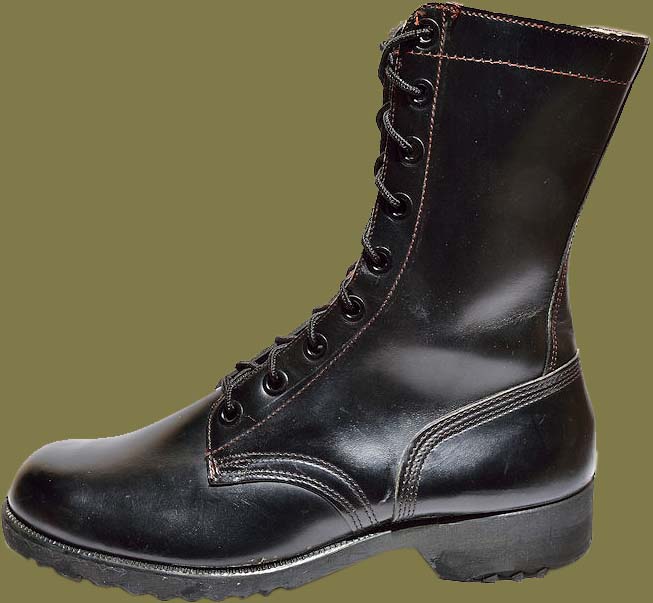
It seems logical to determine the date of production of boots on the basis of embossed numbers (on the inner side of the outer upper part of the boots), rather than the marking of contract production "DSA-100-**", where ** - digits of the year of contract production.
Thus, conventionally, boots, for example, with marking 9-67, can be defined as belonging to the model M-1968, while for boots of the model M-1967 it is quite usual to mark, for example, 7-67. This is to avoid confusion between the two types of M-1967 boots, those with glue-and-nail soles and those with DMS soles. Incidentally, M-1967 boots with embossed "9-67" markings correspond to the contract date DSA-100-68 (i.e. 1968)
(This classification may be reviewed or changed in the future).
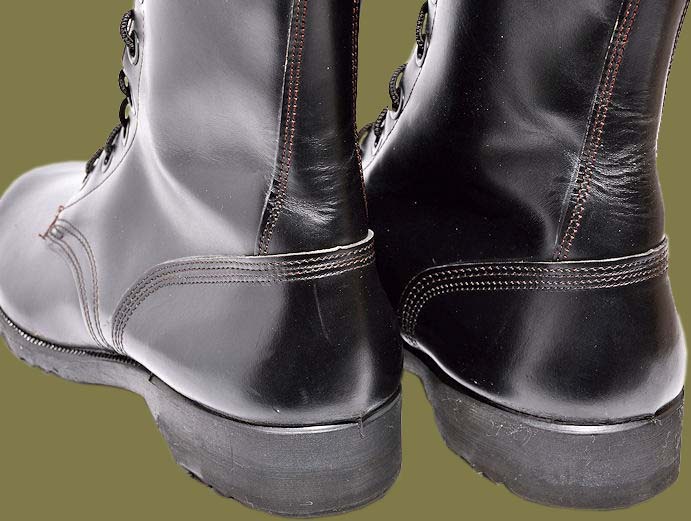
US army combat boots M-1974 (1974 - 1984)
Black leather combat boots used, judging from the markings, from 1974 to 1984.
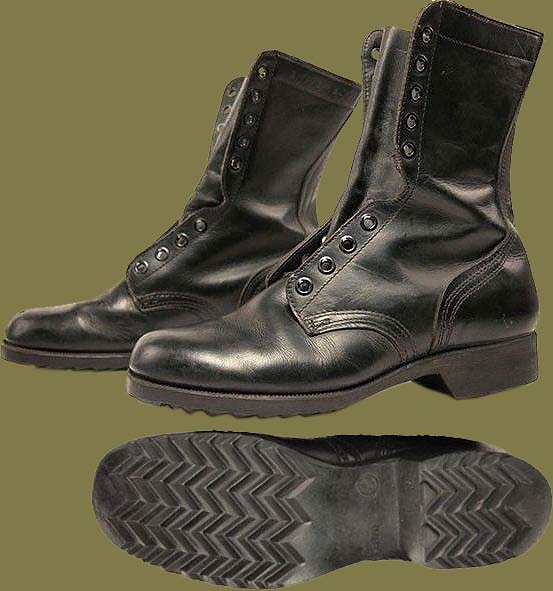
These American combat boots can be easily distinguished from all others by such characteristic features: zigzag pattern of the sole tread ("chevron" type) and direct molded sole (DMS) remained unchanged, lacing system: 5+4 eyelets, convex heel cup.
At the same time, "hybrid" version with new upper and old sole can also occur: the existence of a unique and exceptional model, with an "obsolete" glue-stitched and nailed sole, was confirmed for markings with dates: 3-75 and 9-75.
M-1974 (9 75) Stitched sole.
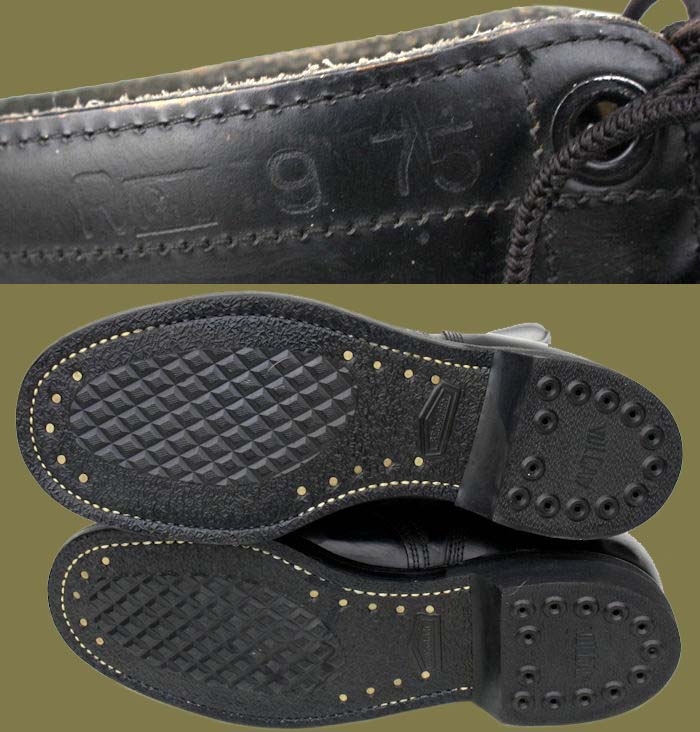
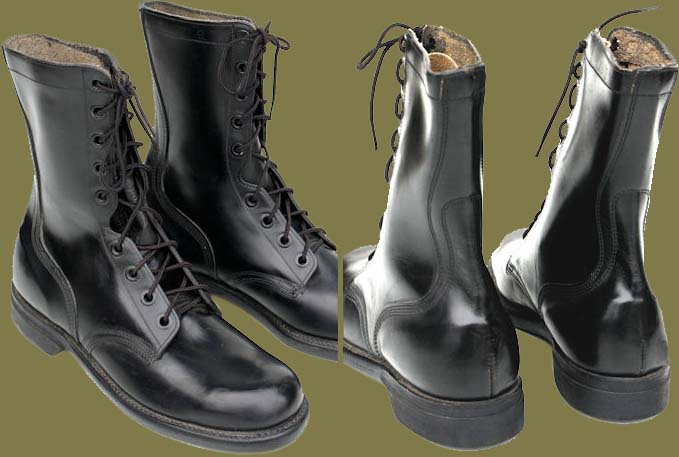
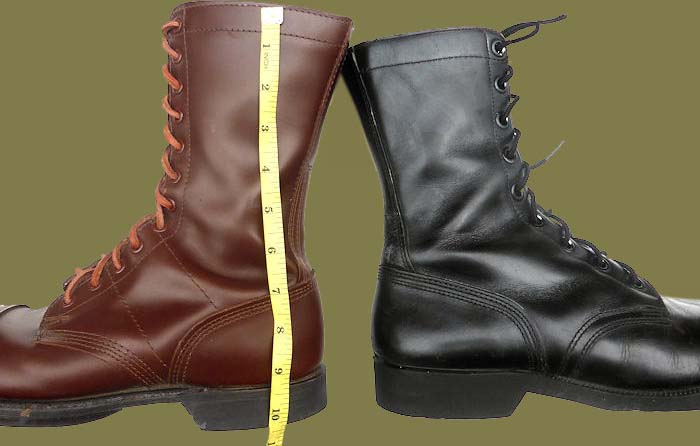
*All images are borrowed from the Internet, the sources:
https://armyshade.exblog.jp
https://armyshade.exblog.jp/21030986/
https://armyshade.exblog.jp/19853143/
https://armyshade.exblog.jp/19853266/
https://armyshade.exblog.jp/19808294/
https://armyshade.exblog.jp/21837378/
https://armyshade.exblog.jp/22917391/
https://armyshade.exblog.jp/21030986/
https://armyshade.exblog.jp/21837378/
Exclusively for cartalana.com
We have much more interesting information on this site.
Click MENU to check it out!
∎ cartalana.com© 2009-2025 ∎ mailto: cartalana@cartalana.com